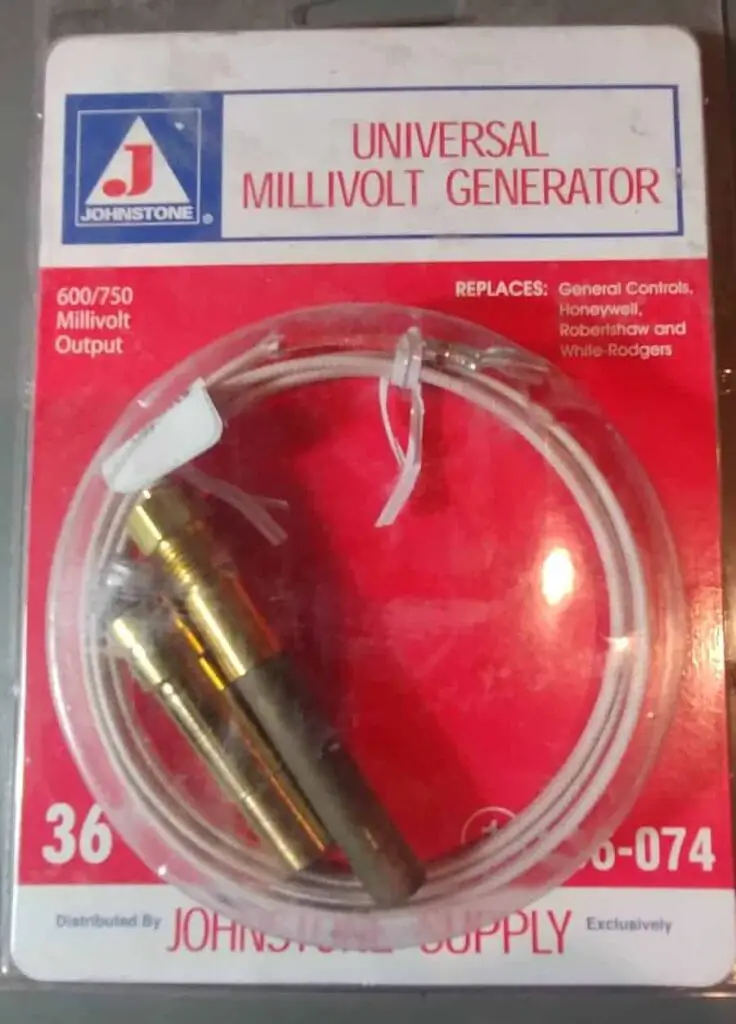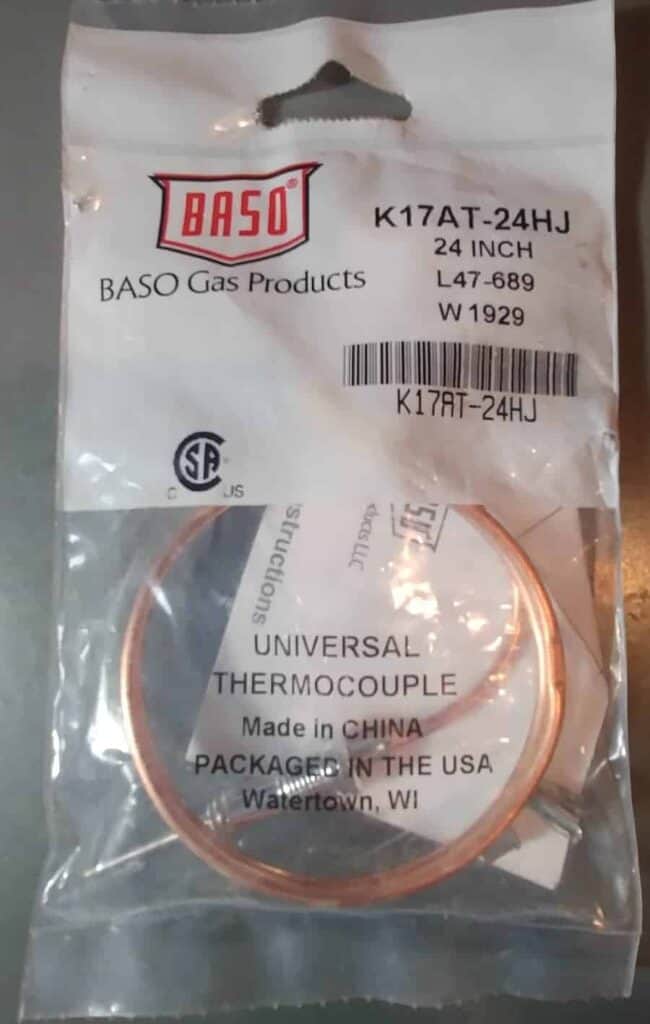When the temperature outside has plummeted and the wind blows, the chances of a power outage increase and we look for a second source of heat that doesn’t require the power that just went out.
That’s when a gas fireplace is a blessing to have. But how does it work if the power is out?
It creates it’s own electricity, just not much of it. That tiny flame you always see down in-between the logs is burning on a pilot generator. That pilot generator consists of two dissimilar metals that when heated create a small amount of electricity. Enough power to open the gas valve.
Natural gas and propane fireplaces are sometimes equipped with a blower that is powered by household current or a nearby 10 volt outlet. If the power goes out the fan will not operate but the flame in the fireplace will continue to burn and produce heat because it’s powered by that pilot generator or millivolt generator.
This power generator is a safety device. When the pilot goes out the gas valve will not open. Most everyone has heard the term thermocouple. Thermocouples operate on the same principle. A pilot generator creates just a little more power than a thermocouple.
A thermocouple will generate about 30 millivolts while a thermopile will create around 350 millivolts. Thermocouples are screwed into a gas valve while pilot generators are wired to the valve.
A millivolt is 1/1000 of a volt. Pretty safe amount of power to work with.
Lots of my customers interchange the word thermocouple with thermocoupler, thermopile, powerpile, pilot generator, millivolt generator. It’s a fact that all of these do the same thing, but their are two different voltages produced.
This universal millivolt generator that you see below comes with a small amount of adapters so it can fit several different types of pilot flame brackets.

This thermocouple also comes with some fittings that aid in it’s installation. Thermocouples like this one are generally used in water heaters and older standing pilot furnaces.

The millivolt generator in your gas fireplace has a gas valve that requires a minimum of 250 millivolts to keep the valve open. If the pilot goes out then the gas valve will close, stopping the flow of gas to the burner.
The millivolt generator will produce about 350 millivolts when not connected to a device. As soon as a gas valve is connected by a switch or a thermostat the gas valve puts a load on the generator and the millivolts drop.
As long as all the connections are good and the millivolts stay above 250 MV then the valve will stay open and you get a nice warm fire.
Because the voltage is so low, all wire connections need to be clean and tight. Any loose connection can cause an open circuit to the gas valve. Sometimes these are troublesome.
One of my customers had a thermostat wire that was really long and all coiled up and hidden by a bunch of junk. Just the long wire was enough resistance to cause intermittent problems with the burner not coming on a times.
Another problem I’ve run into is with so called universal 24 volt and millivolt thermostats. These thermostats come with an anticipator, a dial that sets the cycle rate for the heating equipment.
I have an article that thoroughly explains anticipators and how to adjust them, you can read it here.
The instructions in the thermostat say to adjust the anticipator all the way to the end and then it’s a supposed to work as a millivolt thermostat. Not always so good.
My preference is to buy a millivolt thermostat. One without the anticipator.
Last week a customer had this issue. I didn’t have a millivolt stat in my truck so I left the cover off the thermostat and instructed the customer to gently rub the contacts together in the stat.
It worked without her doing that until just before I showed up the next day. She rubbed the contacts together and the burner lit fine.
How Does A Millivolt Generator Make Electricity?
It’s called a thermoelectric effect. Discovered by Thomas Johann Seebeck in 1821. Seebeck found that by combining two different types of metal and applying heat that it produce an electric current.
So within these thermocouples and pilot generators are two dissimilar metals, lets just say copper and steel.
By combining them or somehow twisting the leads and attaching wires in a certain way to hook those leads to a control like a gas valve we have a completely off grid source of electricity to power a control.
Is It Dangerous If The Pilot Light Goes Out?
Most older furnaces and even currently produced water heaters that have thermocouples or pilot generators have gas valves that feed both the burner and the pilot light.
The pilot line that feeds the pilot is usually made from 1/4 inch aluminum tubing and sometime much smaller (pain in the butt stuff smaller).
If the pilot light goes out, these gas valves have safety feature that will also shut of the flow of gas to the pilot. So they are very safe.
Natural gas and propane have a chemical added to make the presents of gas very recognizable. If your pilot goes out and you can smell gas then shut the gas off at the source. At the meter if needed. Call the gas company.
Can I Replace My Own Pilot Generator?
It must be a fairly common DIY project. They are available at Home Depot and Ace Hardware and who knows where else.
It’s a very simple procedure. It’s critical to have the proper flame on the power generator. The flame must be near enough to the burner as not to cause the flame to delay when the valve opens.
You could loose your hair if you get your face too close when starting the fireplace and things are not lined up correctly.
Do not interchange a pilot generator for a thermocouple. When replacing parts, use the correct replacement.
Conclusion
So, you have a great source for heat and comfort even when the power goes south in a storm or an accident like a car hitting a pole. Regular maintenance is a good idea on gas appliances.
I just installed a gas insert in my own home. We love the added comfort and I really love the idea of no more firewood. It’s so much cleaner and so easy to light compared to wood.
Just turn up the stat
